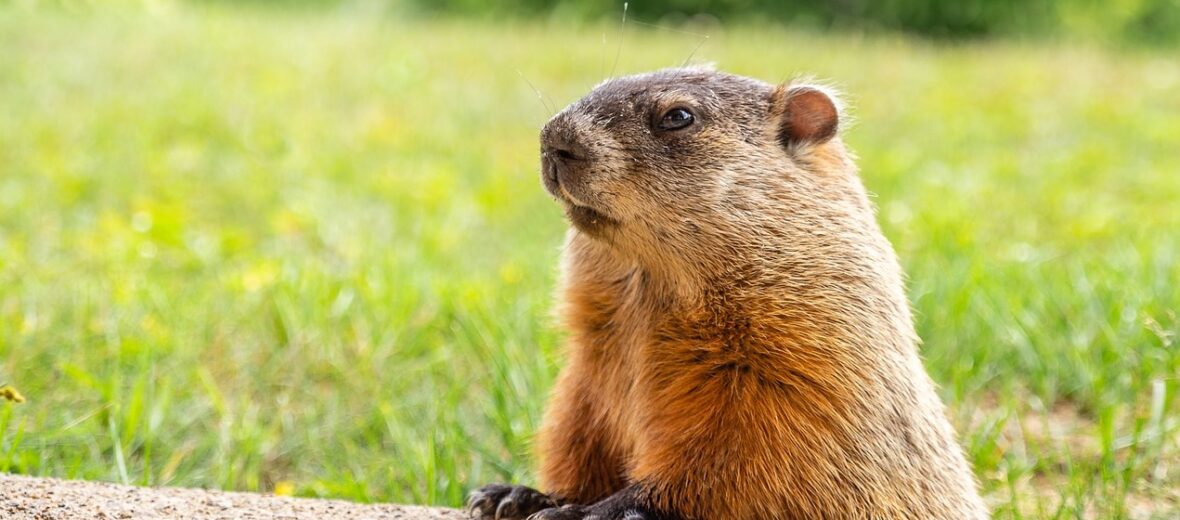
The groundhog, aka woodchuck or whistlepig, is a member of the rodent family and, contrary to popular belief, they cannot predict the weather. You’d have about the same amount of luck predicting the weather by flipping a coin. They are 1 of 14 known species of marmot and the largest member of the squirrel family – by far. These furry critters can be found from Canada down to southern United States. Groundhogs prefer wooded habitats adjacent to open grassland areas. Due to their stable numbers, and the fact that they are regarded as pests, these critters are listed as Least Concern by the IUCN.
First the Stats…
Scientific name: Sciuridae
Weight: Up to 13 lbs.
Length: Up to 16 inches
Lifespan: Up to 6 years
Now on to the Facts!
1.) Digging burrows is a specialty of theirs. They are able to construct burrows up to 6 feet deep and 20 feet wide, with up to 12 openings! They also have separate chambers for food and defecating.
2.) Groundhogs are true hibernators that do so for around 150 days +/- each year.
3.) Contrary to another popular belief, woodchucks do not chuck wood. They have no affiliation with trees or wood piles at all, other than eating bark (on occasions). They can also climb trees. They just need to be able to find a tree that can withstand their weight.
4.) The groundhog is a solitary creature, sans mating season.
5.) These critters can eat 1/3 of their total body weight, per day! They aren’t called hogs for nothing.
But wait, there’s more on the groundhog!
6.) To match a groundhog’s diet, a 195 lbs. human would have to eat up to 64 lbs. of food a day! Like my kids.
7.) Being rodents, their teeth never stop growing. In fact, their incisors grow 1/16 of an inch per week. If left unchecked, their upper incisors will grown into their bottom jaw, disabling their ability to eat and resulting in starvation.
Did you know…?
Amazingly, when hibernating, their body temperature drops from 99°F to 37°F. In contrast, we go into mild hypothermia if our temperature drops a mere 3°F. We lose consciousness at 82°F and death occurs at 70°F! Their heart rate also drops from 80 BPM to 5 BPM and their breathing slows to just 2 breaths per minute, from 16!
8.) During hibernation they only lose about 1/4 of their body weight.
9.) Talk about hard-headed… their dense bones allow them to withstand blows to the head that would kill other creatures. Not sure who decided to test this theory out.
10.) Groundhogs eat plants, grasses, fruit, and tree bark. These critters also can cause substantial damage to crops.
But wait, there’s still more on the groundhog!
11.) They are preyed on by foxes, coyotes, and domestic dogs. Pups are preyed on by owls, hawks, and eagles.
12.) Each February 2nd, Punxsutawney Phil makes an appearance and depending on whether or not the groundhog sees his shadow, there may or may not be 6 more weeks of winter. Phil has only been accurate 39% of the time, over the century of predictions and multiple Phils.
Now a Short Groundhog Video!
Also, check out the Critter Science YouTube channel. Videos added frequently!
Want to suggest a critter for me to write about? Let me know here.



